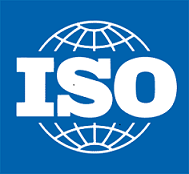The ISO 9001 standard is undergoing the periodic revision standards generally go through every 3 to 5 years to ensure they are relevant and up-to-date. The new version of the standard, expected to be published in September 2015, will feature some important changes.
ISO 9001 is an internationally recognised standard that has been designed to ensure organisations meet the needs of customers and other stakeholders while also meeting statutory and regulatory requirements related to the company’s products and services. ISO 9001 was developed and published by ISO (International Organisation for Standardisation), which is an independent, non-governmental membership organisation and the world’s largest developer of voluntary International Standards. Over one million organisations worldwide are independently certified to this quality standard, making ISO 9001 one of the most widely used management tools in the world today. Our QA Manager, Nigel Griffith, has written a short document summarising the responsibilities of having a Quality Management System, and giving an overview of what the general requirements of being ISO certified are. You can download a PDF of Nigel’s ISO 9001 and Quality Management Systems here.
The impact of this revision will mean some changes for accreditation bodies, certification bodies, training organisations, implementing organisations, procurement organisations, consultants and customers. Organisations already certified to ISO 9001:2008 will have three years to transition to the new standard.
What are the changes to the new standard?
Most of the requirements remain unchanged although some of the terminology will be slightly different and ISO has introduced a common structure that will align with other management system standards such as ISO 14001, Environmental Management Systems (reviewed this year).
The biggest change is the need to take a risk based approach to quality management, which is expected to be beneficial to many organisations.
Smaller organisations and service companies will find the new standard simpler to comply with as it will be less prescriptive; there is a definite move from being required to have a quality manual to having ‘documented information’ that demonstrates systems and processes.




